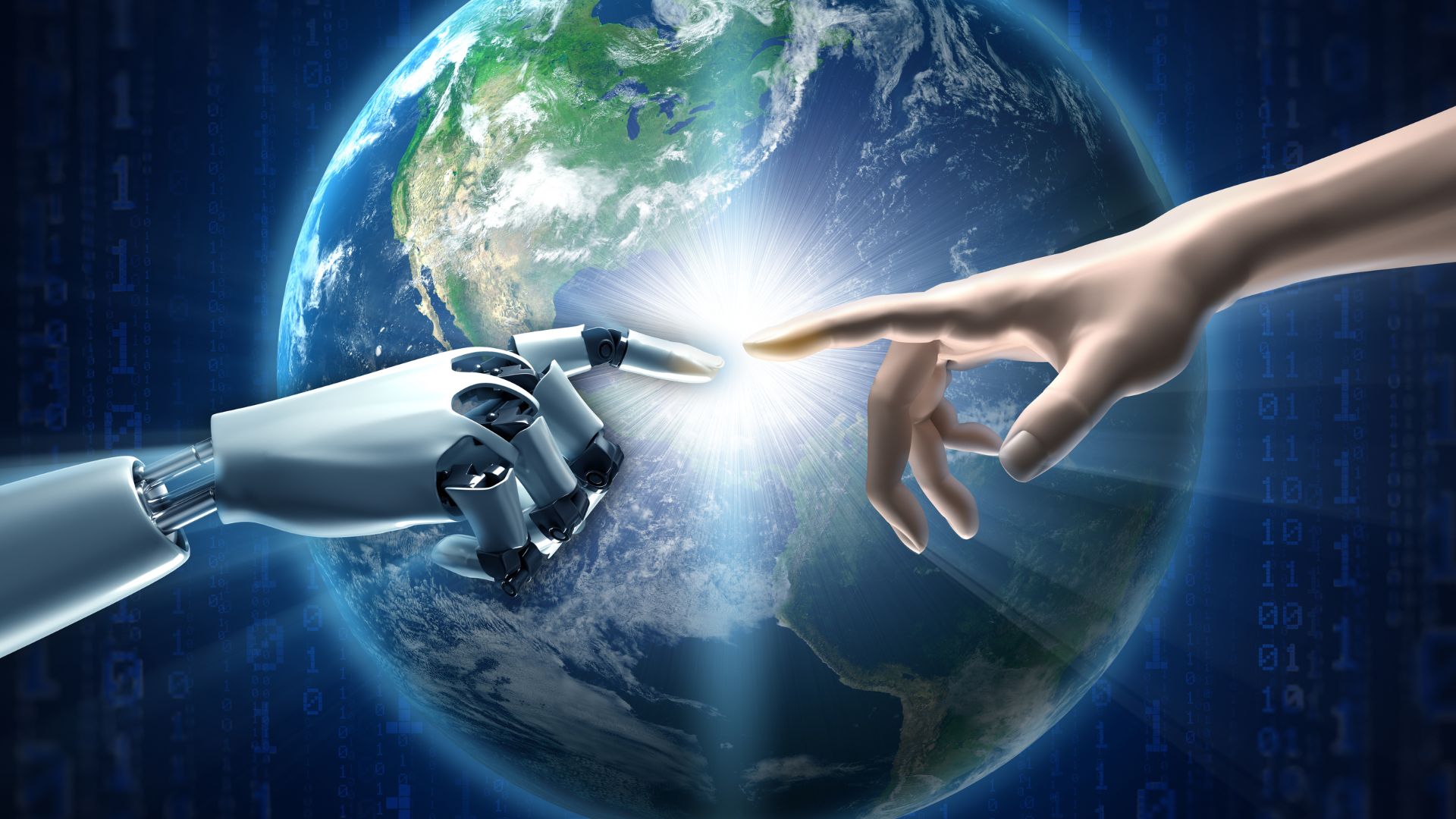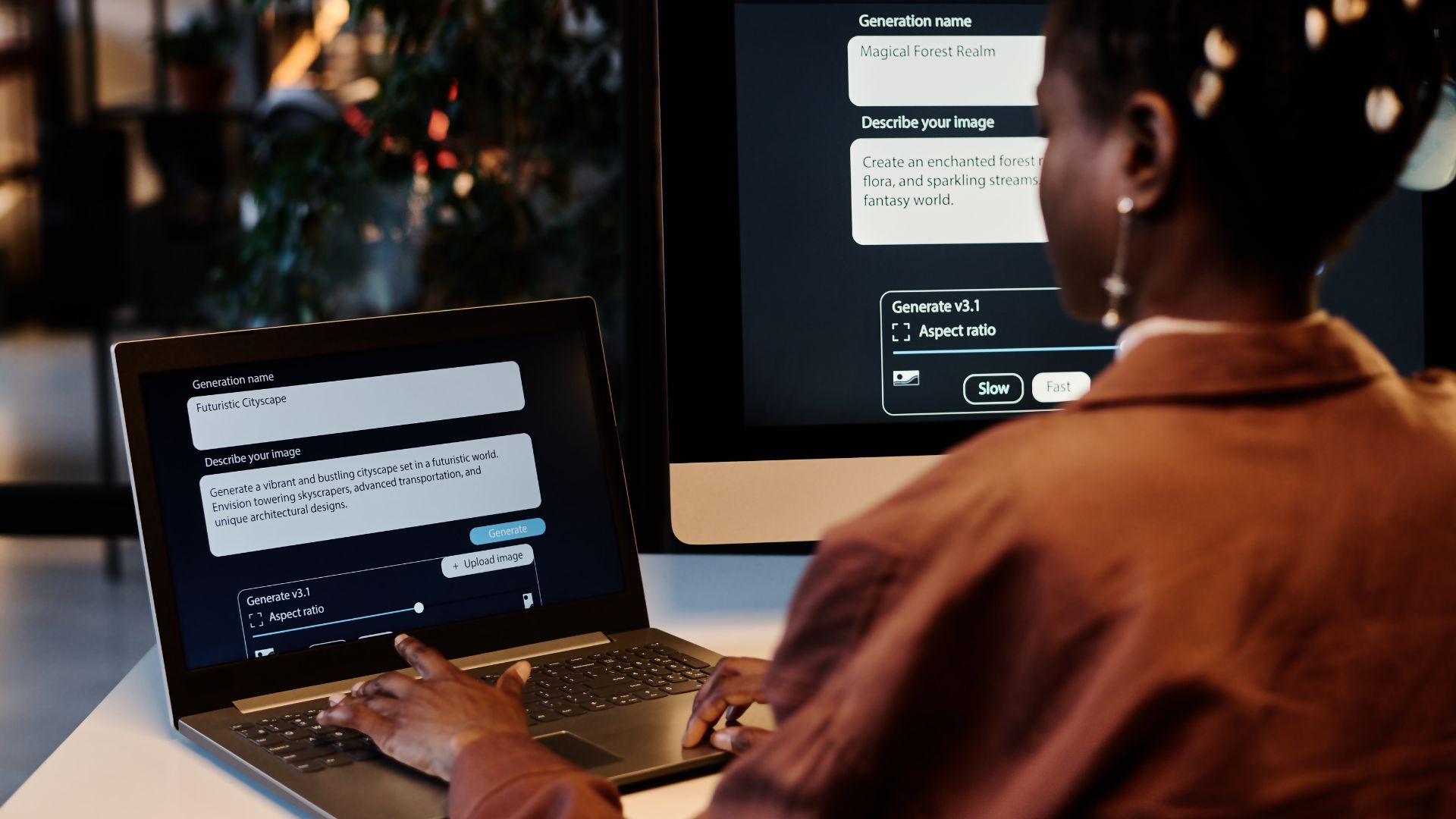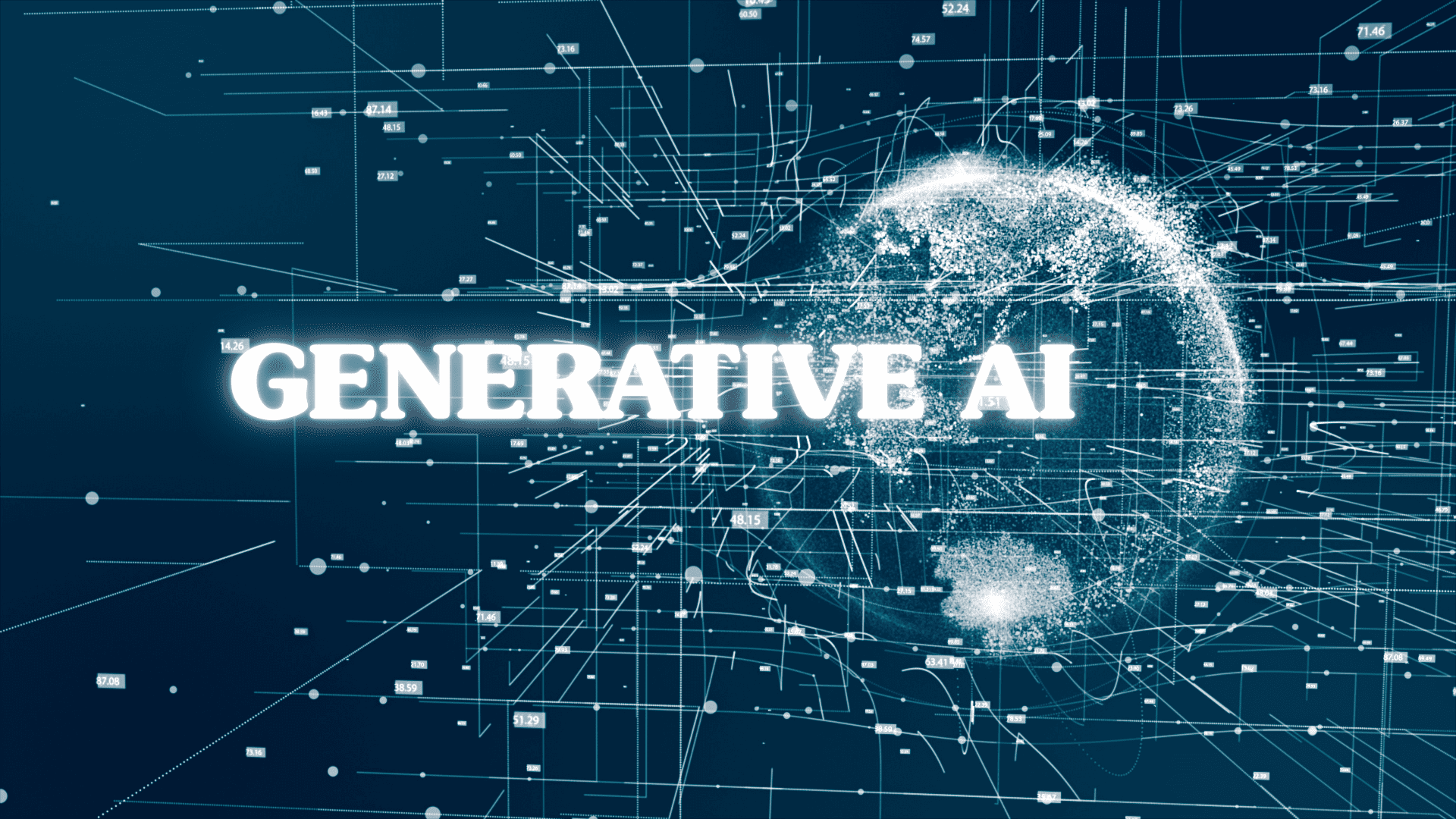In the ever-evolving landscape of retail, staying ahead of the curve is not just an advantage—it’s a necessity. As we navigate the digital age, the integration of cutting-edge technologies is reshaping how businesses understand and cater to their customers. At the forefront of this revolution is computer vision, a transformative force that’s unlocking the power of real-time customer insights and revolutionizing decision-making in retail.
The Retail Revolution: From Intuition to Data-Driven Insights
Gone are the days when retail success hinged solely on intuition and historical data. Today’s retail environment demands a more nuanced, real-time approach to understanding customer behavior and preferences. This shift has given rise to a new era of retail analytics, where every customer interaction becomes a valuable data point, informing strategies and driving growth.
But what exactly is fueling this transformation? The answer lies in the convergence of advanced technologies, with computer vision taking center stage.
Understanding Computer Vision in Retail
Computer vision, a branch of artificial intelligence that trains computers to interpret and understand visual information, is revolutionizing how retailers perceive and interact with their physical spaces and customers. By leveraging sophisticated algorithms and machine learning models, computer vision systems can analyze video feeds and images in real-time, extracting valuable insights that were previously invisible to the human eye.
In fact, a McKinsey report found, “the average number of AI capabilities that organizations use, such as natural-language generation and computer vision, has also doubled—from 1.9 in 2018 to 3.8 in 2022. Among these capabilities…computer vision has remained the most commonly deployed each year.”
Why?
Computer vision can directly grow businesses’ ROI. Whether it’s improving productivity, streamlining processes and tracking downtime, reducing operating costs, or monitoring safety compliance, computer vision improves business efficiency.
In the retail context, this translates to a wealth of applications:
1. Customer Flow Analysis: Tracking how customers move through a store, identifying high-traffic areas and bottlenecks.
2. Demographic Insights: Anonymously assessing customer demographics to tailor product offerings and marketing strategies.
3. Queue Management: Monitoring checkout lines to optimize staffing and reduce wait times.
4. Product Interaction: Analyzing how customers engage with products on shelves, informing product placement and store layout decisions.
5. Security and Loss Prevention: Identifying potential security risks and reducing shrinkage through real-time monitoring.
The Real-Time Advantage: Why It Matters
The true power of computer vision in retail lies in its ability to provide real-time data. According to research from McKinsey, companies who use customer analytics extensively are “significantly more likely to outperform the market,” seeing results like:
- 93% higher profits and revenue
- 82% higher sales
- 115% higher ROI
This is compared to companies who don’t use customer analytics extensively.
Not only can customer analytics help you predict customer behavior and trends, resulting in more effective marketing, higher customer loyalty, sales, ROI and so on, but you can also leverage real-time analytics for strategic and more agile decision-making.
- Agility in Decision-Making: Real-time insights enable retailers to make swift, informed decisions. Whether it’s adjusting staffing levels during unexpected rush hours or quickly reorganizing product displays based on customer interaction patterns, the ability to react in the moment can significantly impact the bottom line.
- Enhanced Customer Experience: By understanding customer behavior as it happens, retailers can tailor the shopping experience on the fly. This could mean everything from personalizing digital displays to guiding staff interventions at crucial moments in the customer journey.
- Operational Efficiency: Real-time data allows for immediate optimization of store operations. From inventory management to energy usage, computer vision can help retailers streamline their processes and reduce costs.
- Predictive Analytics: While historical data is valuable, real-time information feeds into predictive models, allowing retailers to anticipate trends and customer needs with unprecedented accuracy.
- Customer Footfall Analysis: In the dynamic world of retail, understanding customer behavior is paramount. Customer footfall analysis, a crucial tool in this endeavor, involves tracking and measuring the flow of people in and out of retail spaces. Traditional methods of gauging customer interest and store efficiency often fail to capture the dynamic nature of customer movements and interactions within the store. This gap in understanding can lead to several issues, such as poorly optimized store layouts, inefficient staffing schedules, and ineffective placement of displays and promotional materials. These shortcomings can adversely affect the customer experience, sales, and overall store productivity. This process goes beyond simple counting; it’s about decoding customer behavior patterns and leveraging the insights to drive business success.
As the retail landscape evolves, with e-commerce reshaping consumer habits, brick-and-mortar stores must adapt to stay competitive. Monitoring foot traffic through methods like cameras and sensors allows for a more accurate understanding of how customers navigate the store. This understanding allows for making informed decisions that enhance store functionality, customer satisfaction, and business performance.
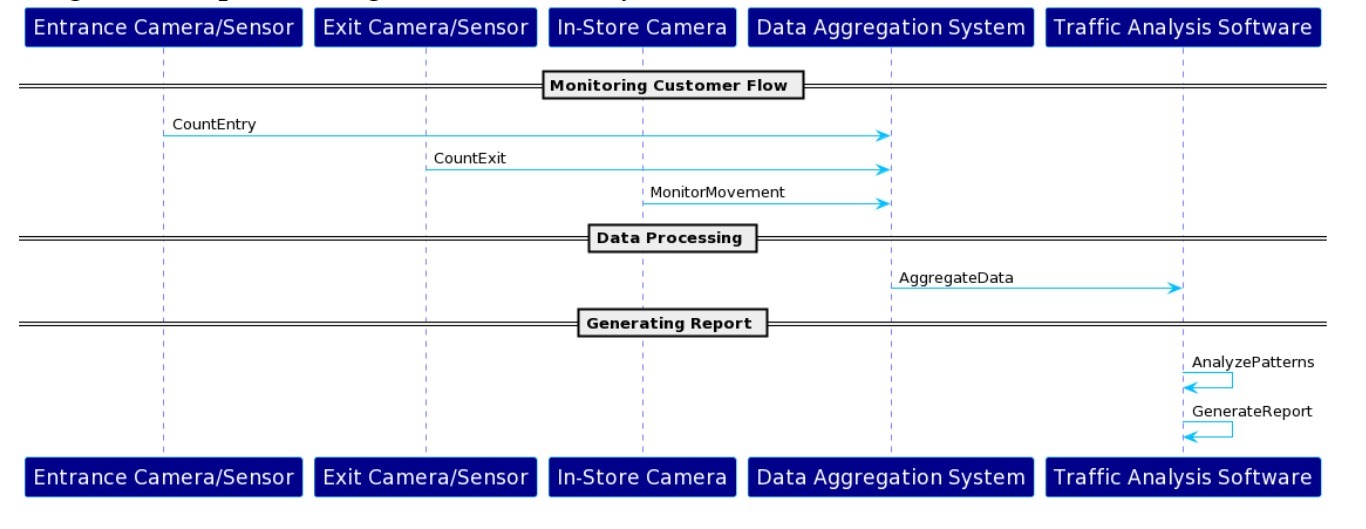
Figure: Implementing foot traffic analysis in retail sector from Vishvesh Soni (2021)
The utilization of heatmaps in a retail store is crucial for several reasons. Firstly, they provide a clear and intuitive visual representation of customer traffic within the store, highlighting the paths and areas that are most frequented by customers. This information is invaluable for strategic product placement. Retailers can use these insights to position high-value or high-margin products in areas with high customer traffic, potentially increasing the likelihood of purchase. Additionally, heatmaps can reveal underutilized sections of the store, offering opportunities for improvement or reorganization. This could involve rearranging store layouts, introducing new product lines, or enhancing the visual appeal of these areas to attract more customers.
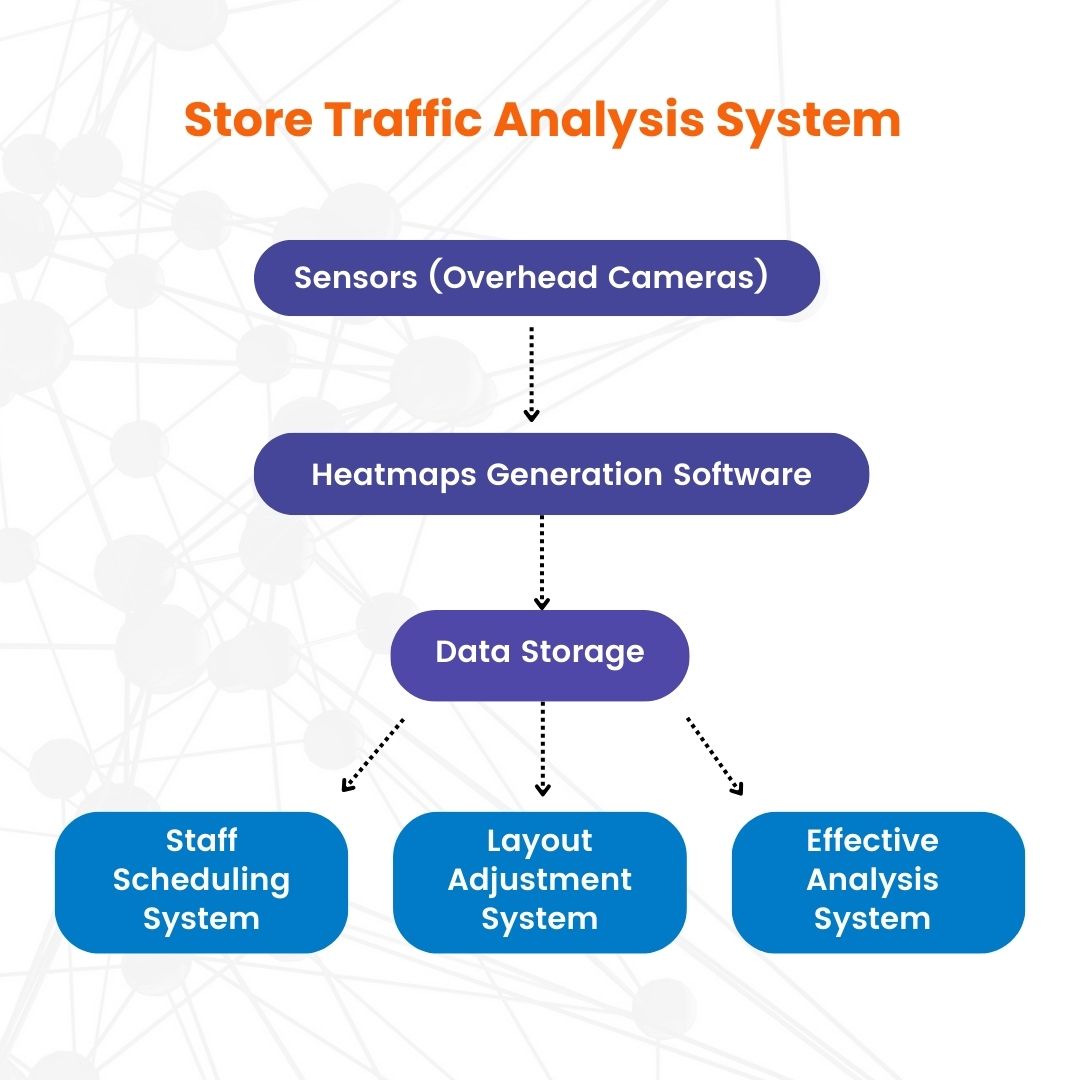
Figure: Store traffic analysis implementation in retails from Vishvesh Soni (2021)
Spotlight on Innovation: Valiance’s Foot Fall Vision
As we explore the landscape of computer vision in retail, it’s crucial to highlight cutting-edge solutions that are pushing the boundaries of what’s possible. One such innovative product is Foot Fall Vision by Valiance Solutions, a comprehensive customer tracking and analysis tool that exemplifies the power of computer vision in retail.
Foot Fall Vision: Computer Vision Based Visitor Analysis
Valiance’s Foot Fall Vision leverages advanced AI and computer vision technology to provide retailers with deep insights into customer behavior and store performance. Let’s explore some of its key features and benefits:
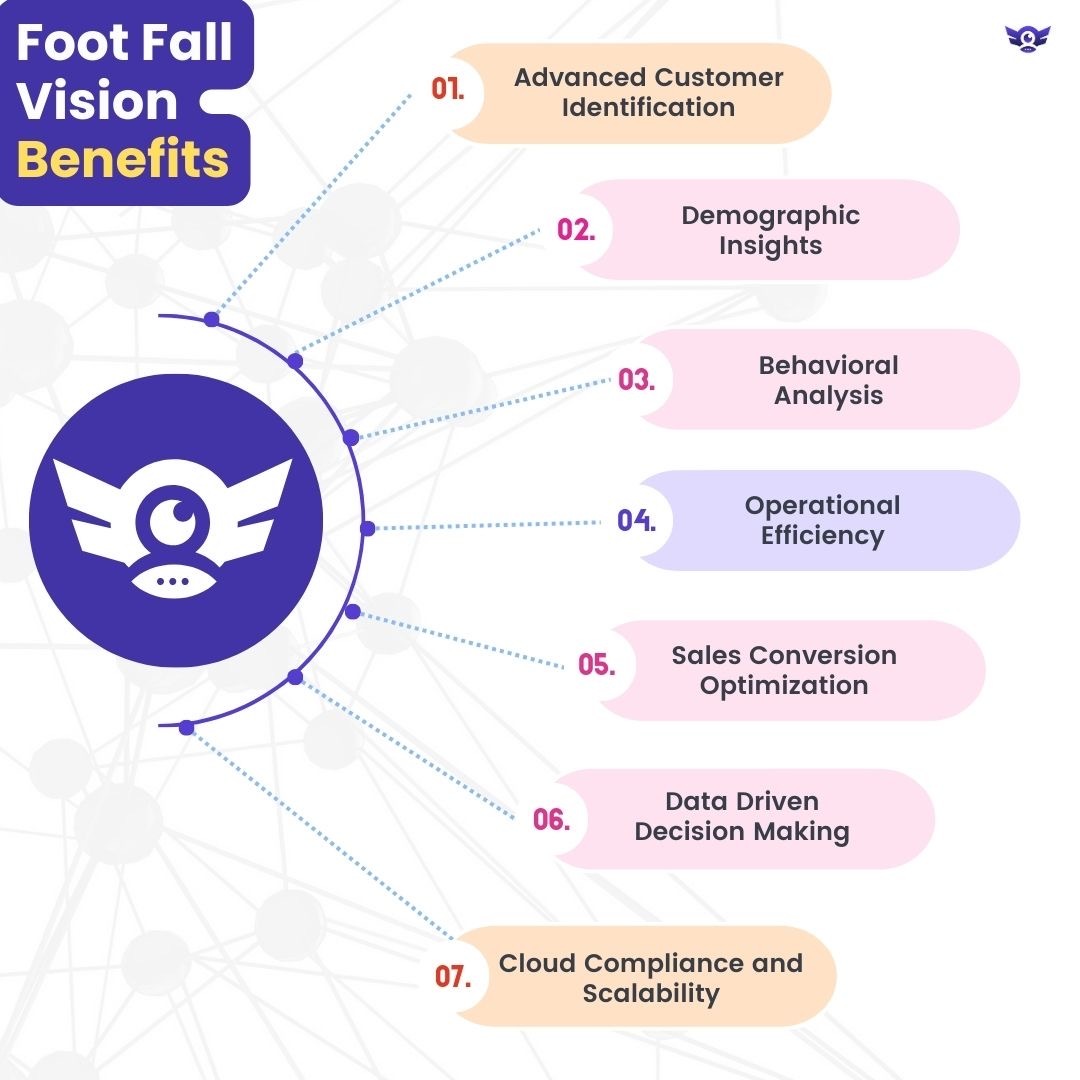
- Advanced Customer Identification: Foot Fall Vision goes beyond simple counting. It uses sophisticated algorithms to distinguish between employees and potential customers, capturing detailed entry information for each visitor. This level of granularity allows retailers to build a more accurate picture of their customer base and foot traffic patterns.
- Demographic Insights: By analyzing visual data, the system can provide valuable demographic information such as age groups and gender. This data is crucial for tailoring marketing strategies and product offerings to match the store’s actual customer profile.
- Behavioral Analysis: The system tracks customer dwell time in different sections of the store and identifies popular areas and product displays. This information is invaluable for optimizing store layouts and understanding customer engagement levels with various products.
- Operational Efficiency: By identifying peak hours and periods of high customer activity, Foot Fall Vision enables retailers to optimize staff allocation and improve overall operational efficiency.
- Sales Conversion Optimization: One of the most powerful features of Foot Fall Vision is its ability to correlate customer footfall data with sales figures. This allows retailers to identify factors influencing purchase decisions and develop strategies to convert more potential customers into buyers.
- Data-Driven Decision Making: With real-time and historical data at their fingertips, retail managers can make informed decisions quickly. The system generates customized reports and dashboards, providing actionable insights for management.
- Cloud Compliance and Scalability: Designed with growth in mind, Foot Fall Vision is a cloud-compliant application that can be deployed on any major cloud platform. This scalability ensures that the system can accommodate future growth in store numbers and increased data volumes.
- Revolutionizing Retail Operations: Valiance’s Foot Fall Vision represents a significant leap forward in retail analytics. By providing a comprehensive suite of tools for customer analysis, operational optimization, and data-driven decision-making, it addresses many of the key challenges faced by modern retailers.
For instance, the system’s ability to distinguish between employees and customers solves a common problem in foot traffic analysis, ensuring more accurate data. The demographic insights feature allows for more targeted marketing and product placement strategies, potentially increasing sales and customer satisfaction.
Moreover, the behavioral analysis capabilities of Foot Fall Vision can lead to more intuitive store layouts, enhancing the overall shopping experience. By understanding how customers move through the store and interact with different product displays, retailers can create more engaging and efficient shopping environments.
The system’s focus on sales conversion optimization is particularly noteworthy. In an era where online competition is fierce, brick-and-mortar stores need every advantage they can get. By providing insights into the factors that influence purchase decisions, Foot Fall Vision equips retailers with the knowledge they need to increase conversion rates and maximize the value of each store visit.
The Future of Retail Analytics
The Future of Retail Analytics: Solutions like Valiance’s Foot Fall Vision are at the forefront of a new era in retail analytics. As these technologies continue to evolve, we can expect even more sophisticated capabilities, such as emotion recognition, augmented reality integration, and hyper-personalized shopping experiences.
The key for retailers will be to stay abreast of these developments and to view technologies like Foot Fall Vision not just as tools for data collection, but as strategic assets that can drive business growth and enhance customer experiences.
The integration of computer vision and real-time data analytics in retail is not just a technological upgrade—it’s a fundamental shift in how businesses understand and serve their customers. By harnessing the power of visual data, retailers can create more engaging, efficient, and personalized shopping experiences, driving customer loyalty and business growth.
As we stand on the brink of this vision-driven retail revolution, the question for businesses is no longer whether to adopt these technologies, but how quickly they can integrate them into their operations. Those who embrace this change, who learn to see their stores and customers through the lens of computer vision, will be best positioned to thrive in the retail landscape of tomorrow.


